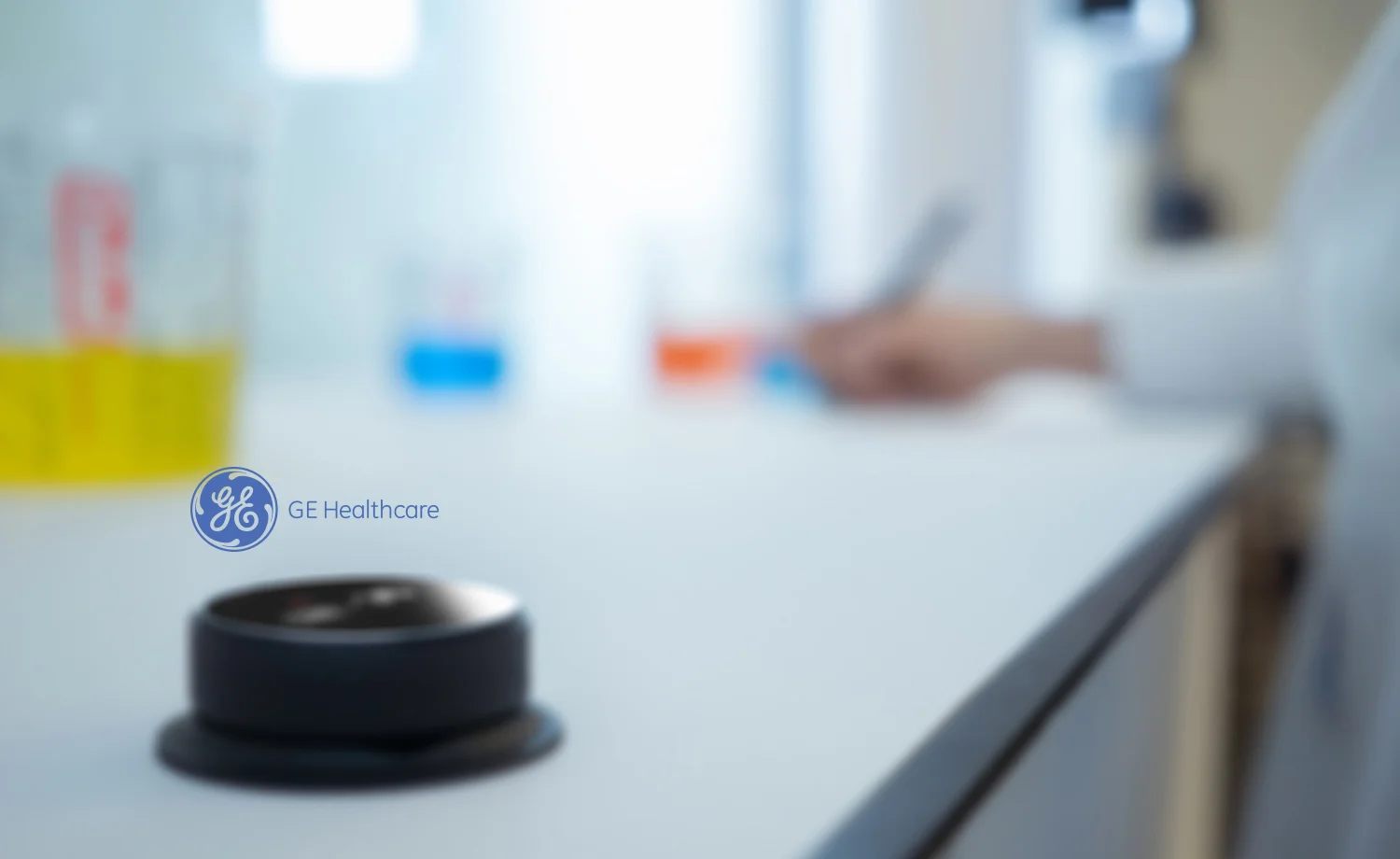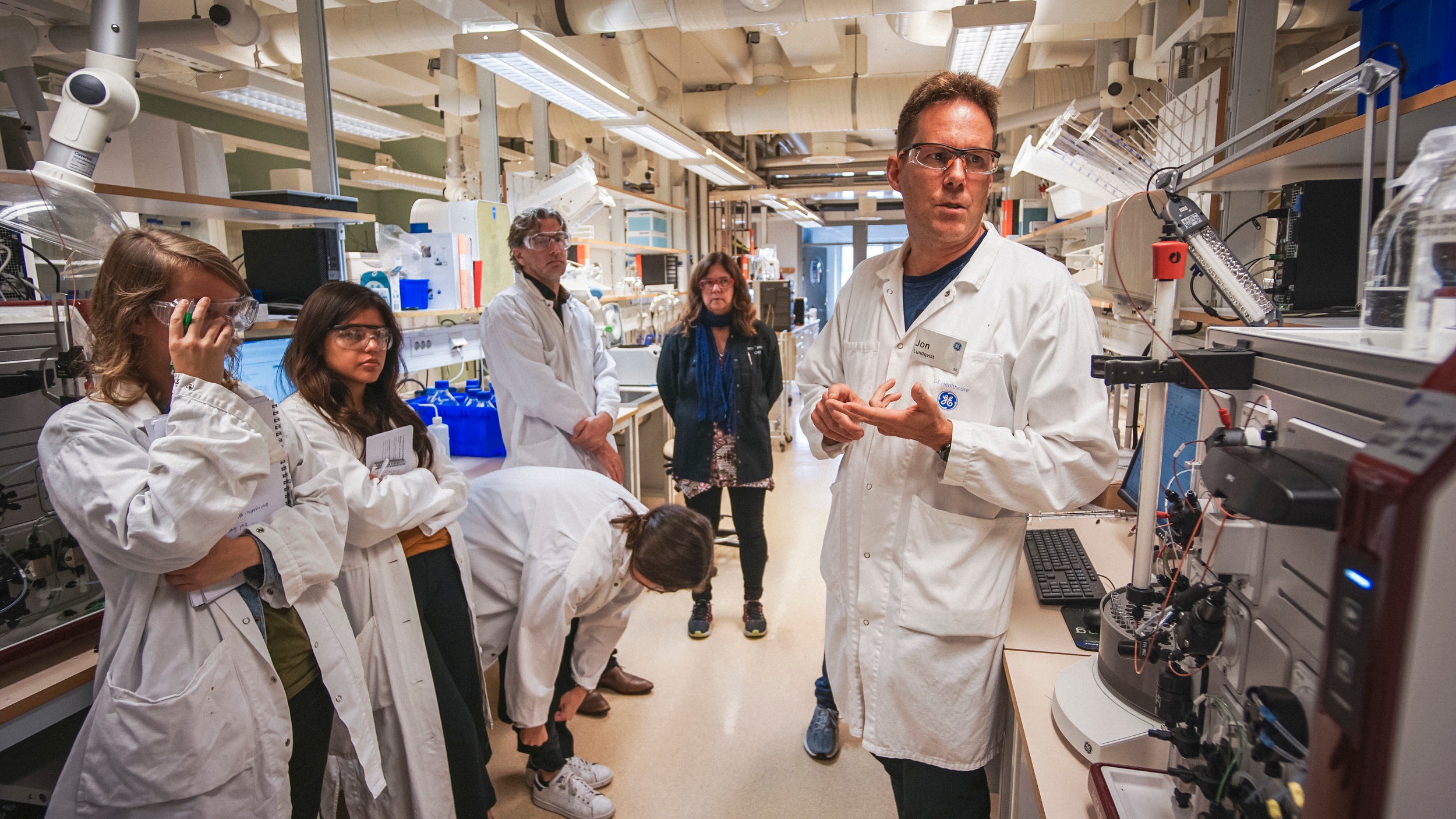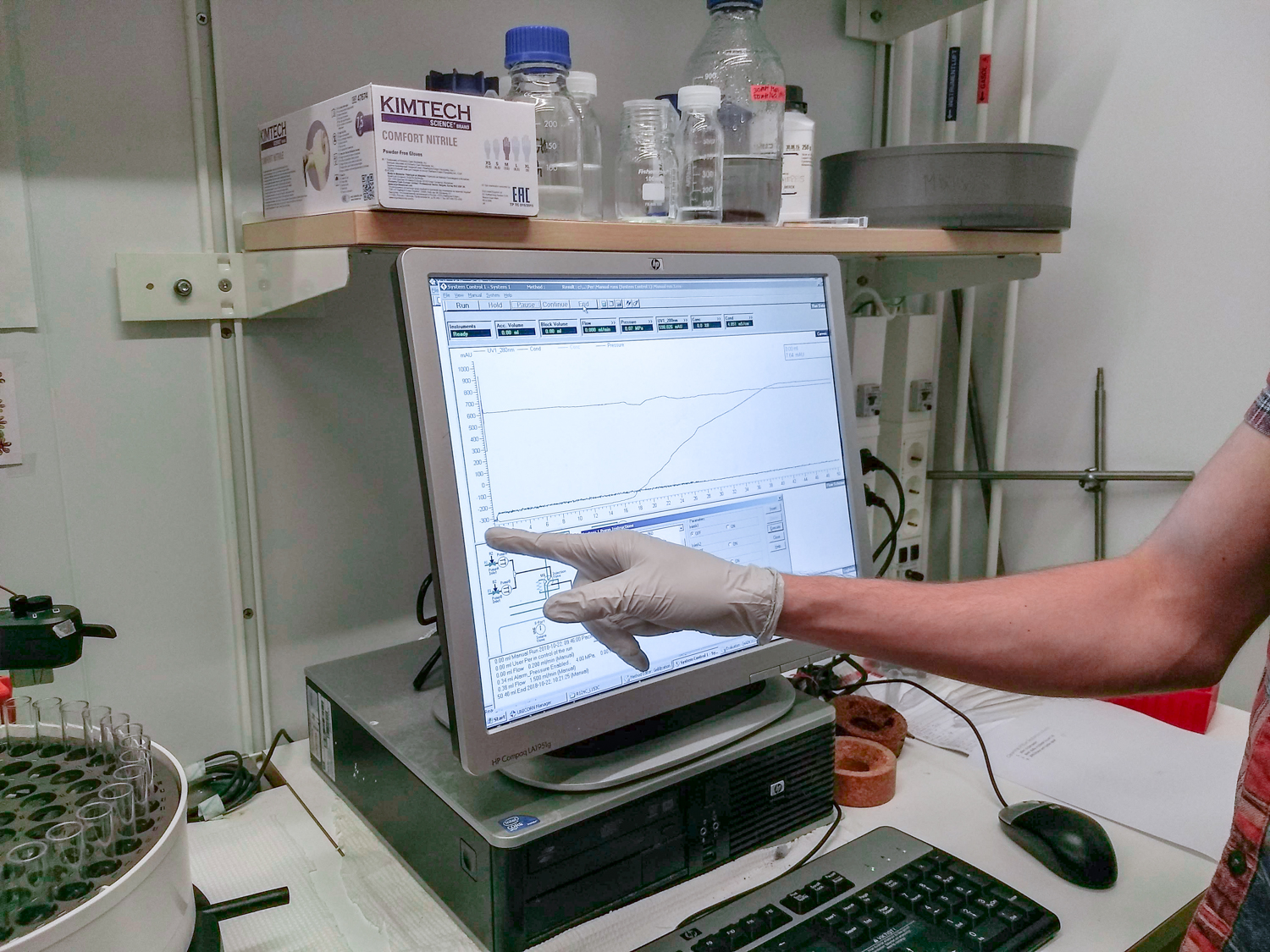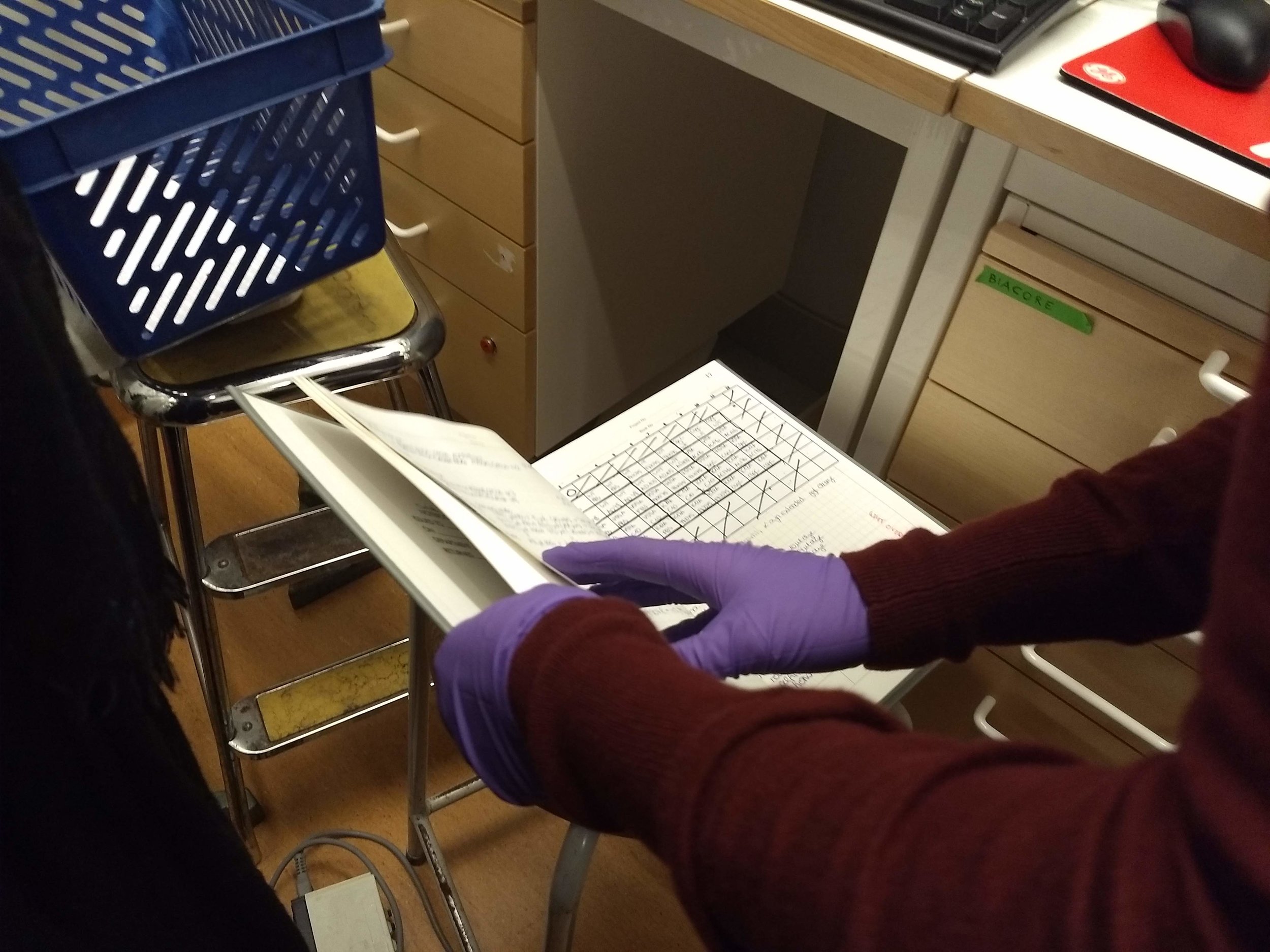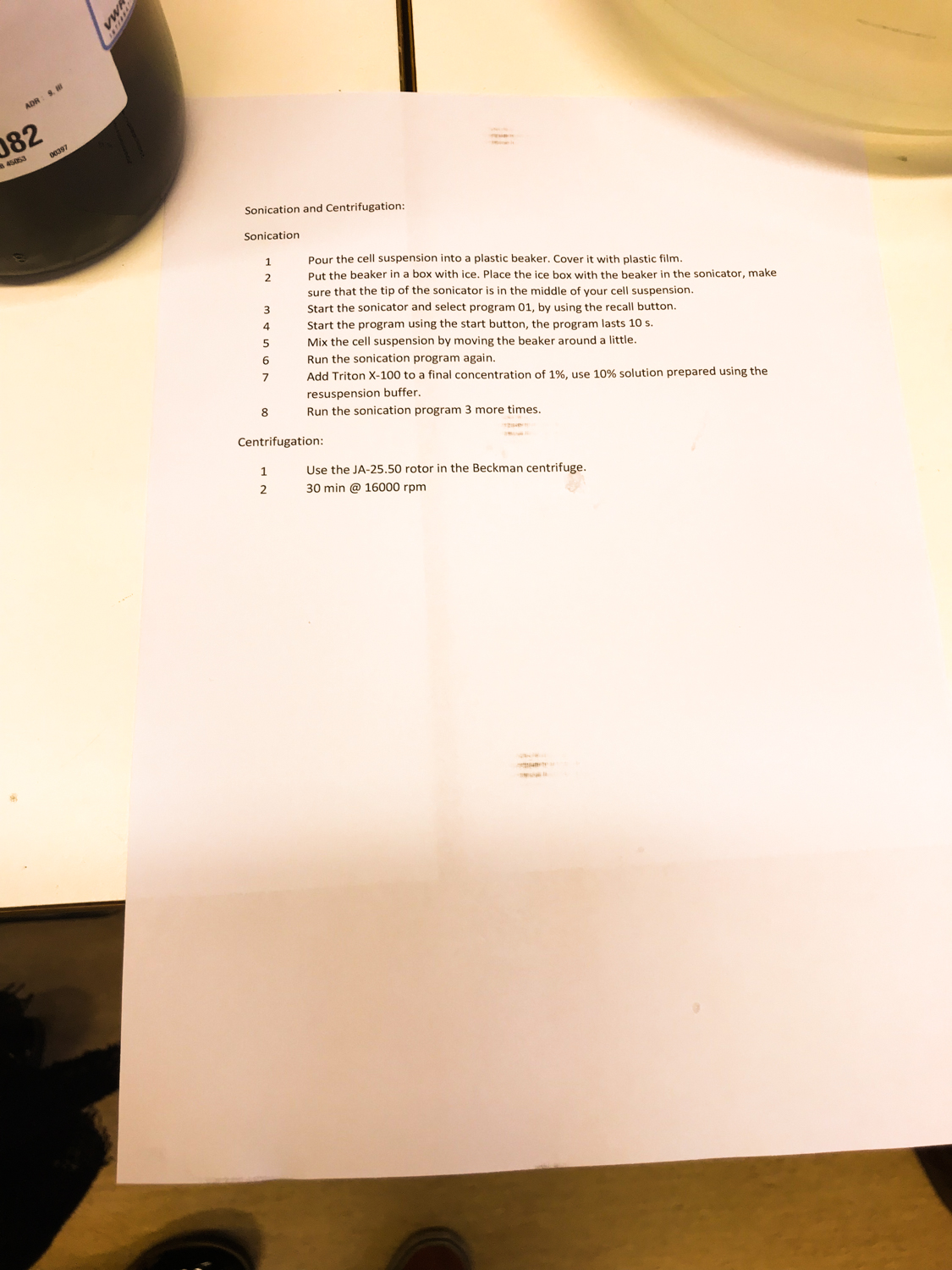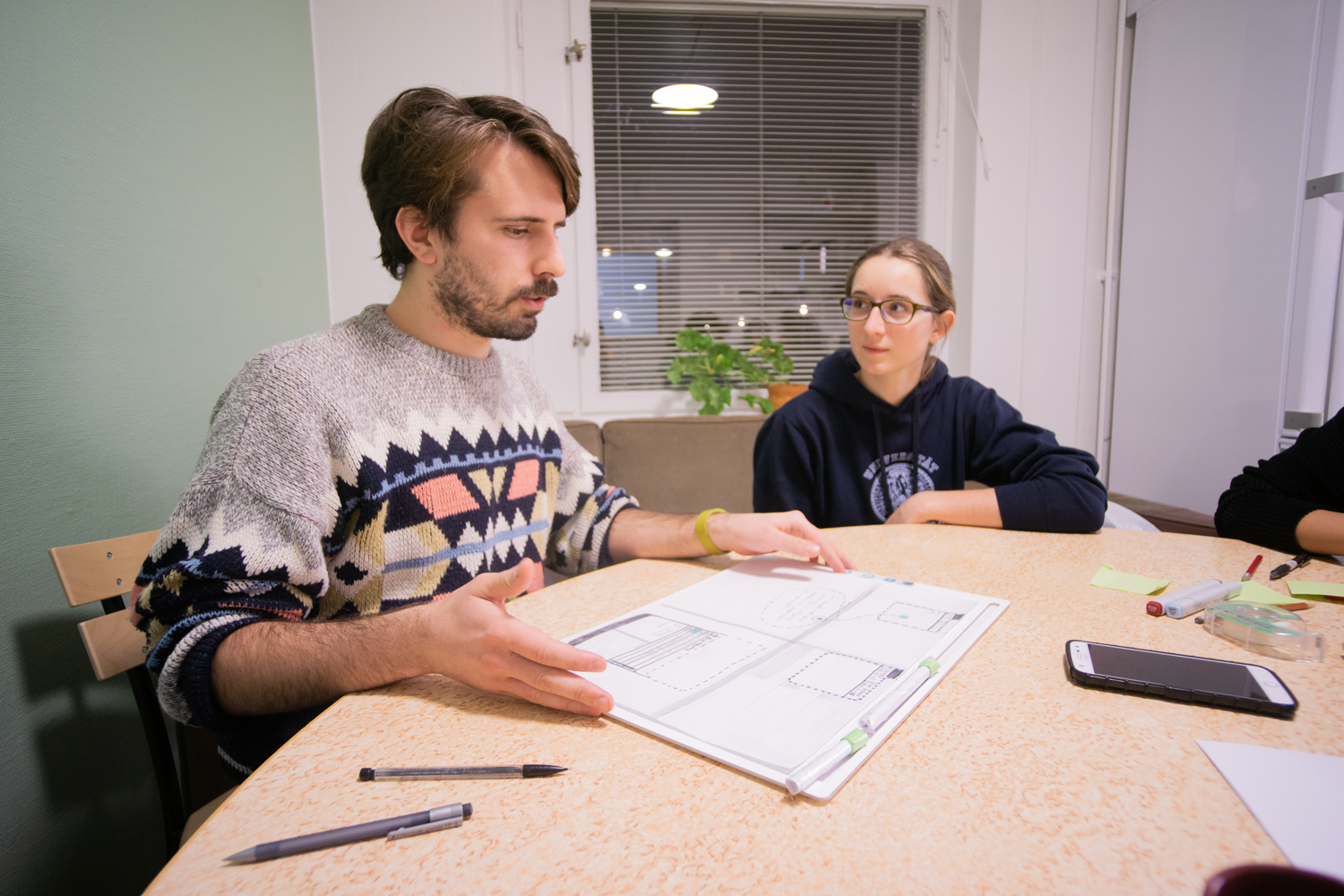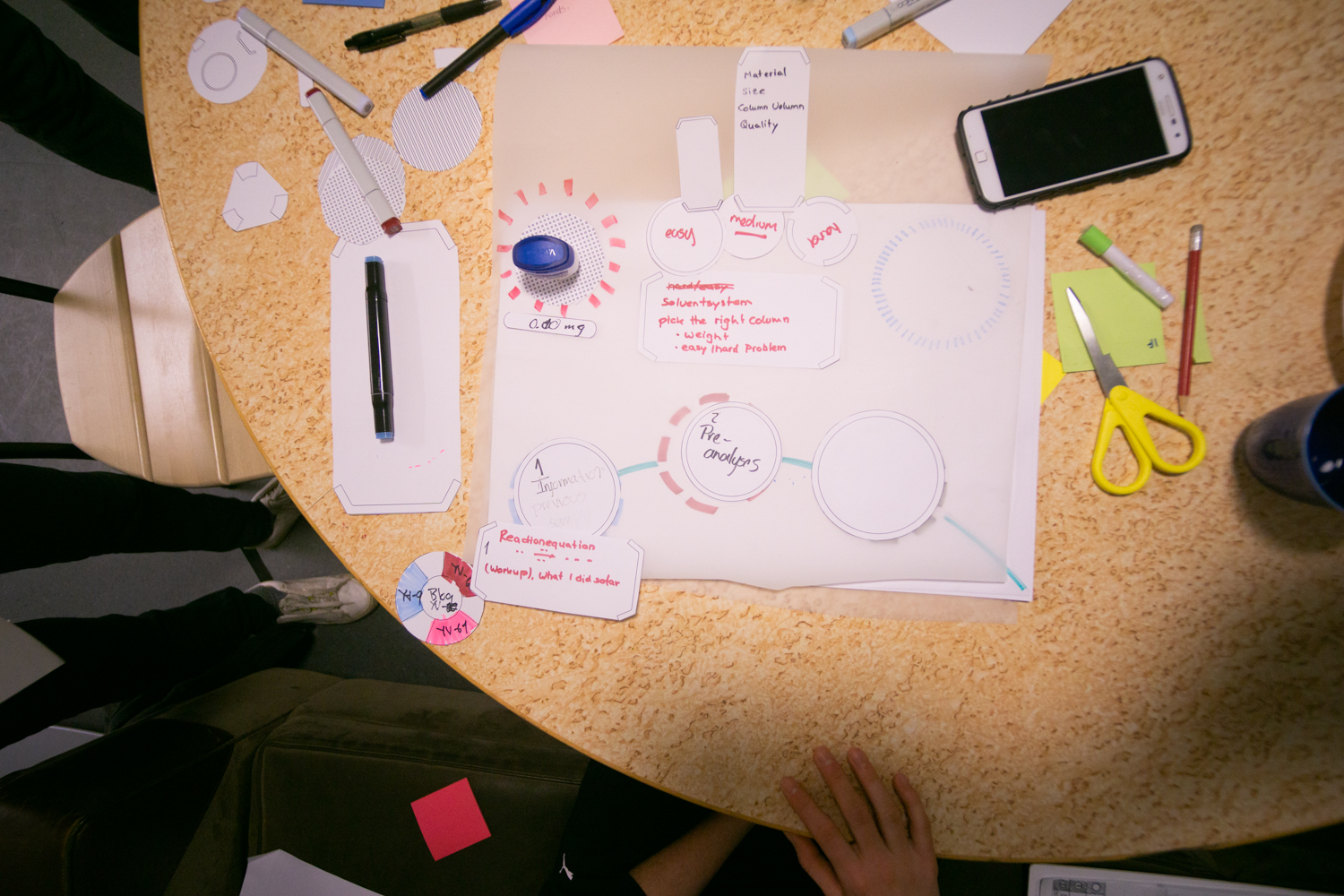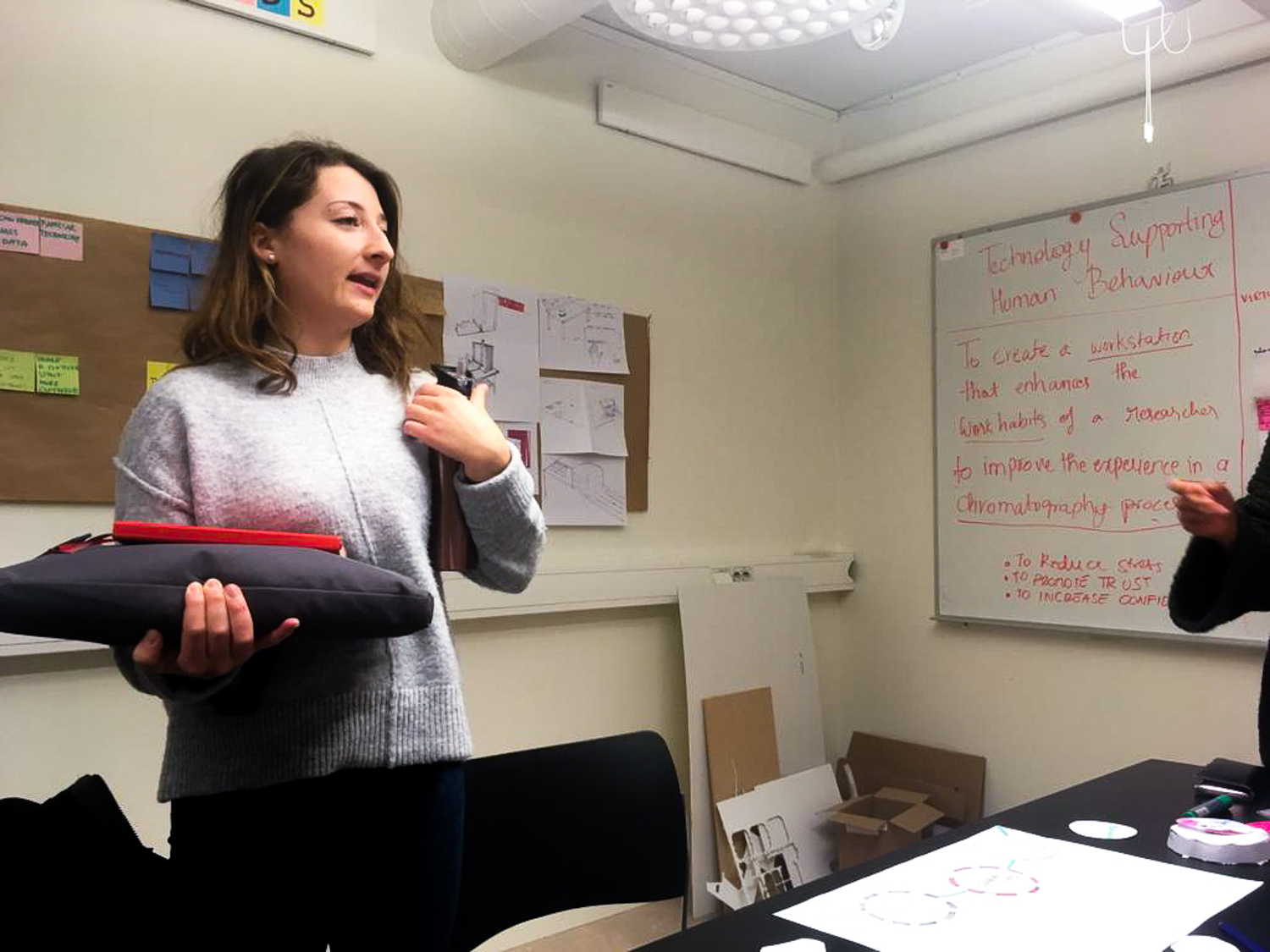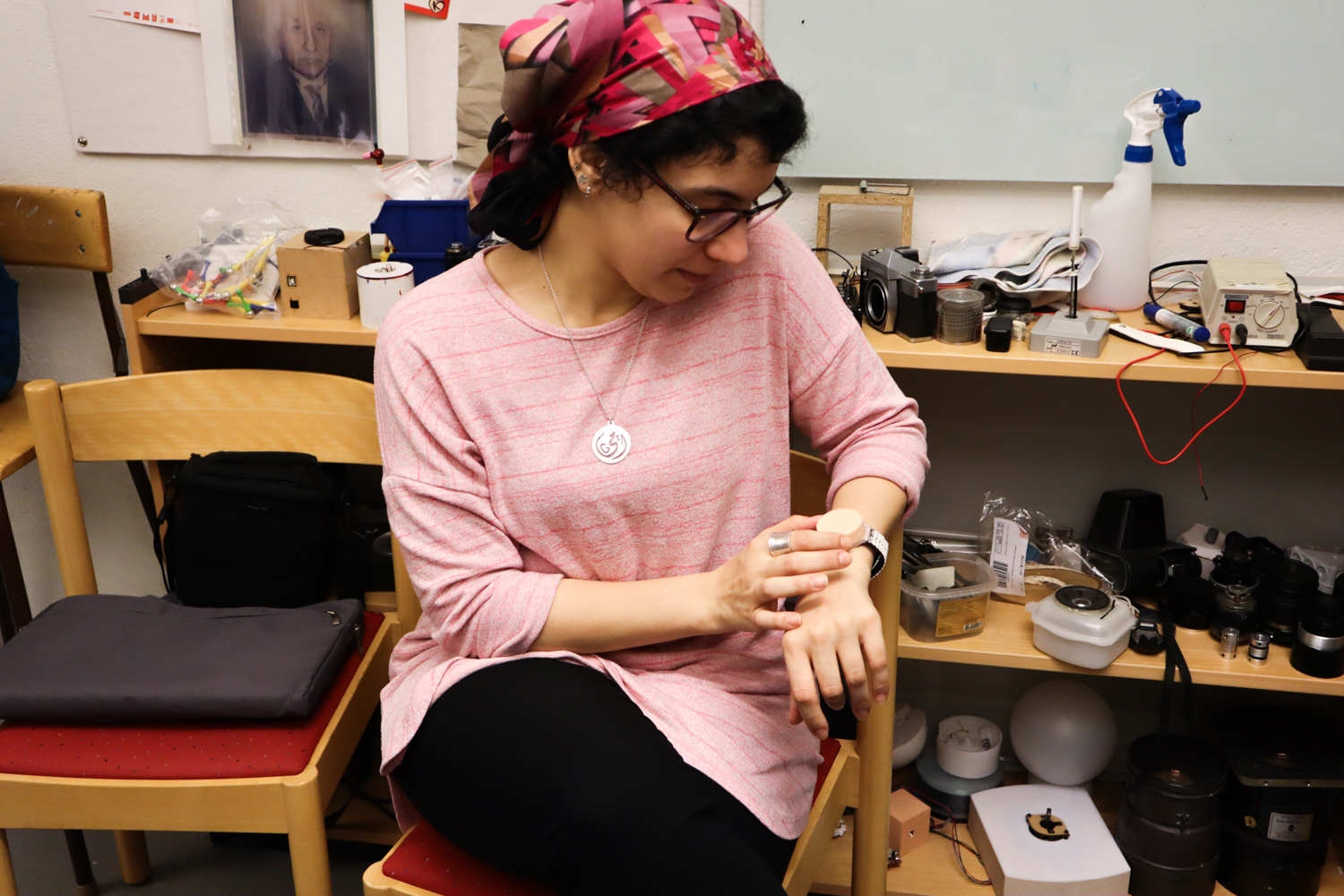ROSETTA
PROJECT GOAL
The seamless integration of a lab researchers work environment and behaviour to map out and collect their knowledge in the context of using a chromatography device.
INTRODUCTION
‘Rosetta’ was created during a 10 week collaboration with GE Healthcare during the professional product development course. The brief handed to us is as folows; ‘To design and develop a system interface proposal that shows a future vision and alternative ways of user interaction with chromatography system(s) in protein purification process. Moreover, the design concept shall enhance end-user experience (UX), to fulfil customers’ needs and to align with GEHC LS business goals and brand values.’
Chromatography is the process of protein purification. During this project we had to study the system of the Äkta Pure devices to find gaps in the design. Understanding the users requirements to develop solutions that would help them in this process was the main task of the project
COURSE
Professional Product Development ( 10 Weeks), Umeå Institute of Design, Sweden, 2018
TEAM
Nancy Valerdi, Paolo Camerin, Se Hyoun Eom Zena Corda.
ROLE
Concept development, Experience Design, Graphic Design, Wire frames, User-flows for the smart table.
THE PROCESS OF ROSETTA
INTRODUCTION TO CHROMATOGRAPHY AND THE ÄKTA PURE
As part of understanding what chromatography is and to know more about the scope of the project we visited the GE Healthcare facilities located at Uppsala city. There we conducted interviews and observations of the lab and a machine operation.
We realised that some parts of the process of protein purification were missing and needed to be gathered with average user of the purification process in order to understand the context and motivation in a broader and deeper sense.
Our next steps involved understanding “How the system works? VS How people interact with the system?”
Picture taken by Paolo Camerin during our visit at GE Healthcare Uppsala.
JOURNEY MAPPING OF THE CHROMATOGRAPHY PROCESS
We interviewed research students from Umeå University to get a better understanding of what chromatography is. We used journey maps, based on experiences from the past to track their experiences and impressions of the process.
SMALL PART OF A BIGGER GOAL
We understood that the chromatography process is a small part in a bigger system. The operation of the machine and software are tools to achieve a bigger goal and we discover the relevance of the preparation phase and the spectrum of time that this phase requires in comparison to the purification phase.
RESEARCHERS USING CHROMATOGRAPHY MACHINES
To get a better understanding of users in context of a laboratory we conducted multiple visits with different users of a chromatography machine at the Umeå University KBC department. We combined interviews with observations. We could observe that a research team is a combination of a research senior leader, a research master student and a bachelor intern. We followed their preparations process, running of samples and collection of it.
“I would like to talk to a machine in the future, have my personal R2-D2, but now I’m too shy to talk to SIRI?”
“I go back to my desk if I need to record or write down something”
INSIGHTS FROM THE USER RESEARCH
Taking precise notes of the procedures.
Having a protocol present with them at all times
Labelling everything in use
Moving between many spaces
Interacting with colleagues that have different levels of expertise
Cleaning of the space
Their space is very cluttered
Talking aloud to remember the tasks to do or memorise.
Referring to old experiments or experiments conducted by other researchers
For a researcher the information and insights they gather through their research process is of most value to them. They use this insights in publications and scientific journals which are prestigious their profession. The value in the researchers work is the knowledge they acquire and share through their published work.
HOW CAN WE SUPPORT HUMAN BEHAVIOUR IN A RESEARCH LABORATORY TO MAP OUT AND COLLECT THEIR KNOWLEDGE IN THEIR WORK ENVIRONMENT?
DESIGN BRIEF
IDEATION
Based on the insights formed during the research phase we formulated 3 different directions to help us develop ideas. We mainly focused on developing concepts based on data collection and automation.
CONCEPT DIRECTIONS
The four concepts the group came up can be represented as a triangle, with a heart, as a central point. The vertices are defined by three different areas of exploration: physical (the object), virtual (Augmented Reality) and the environment (the lab environment). The heart of this configuration would then be the data. All the first three concept generate and relate on data to be really efficient, therefore the fourth concept keeps them together creating a solid enough background, to let them live and develop.
ENVIRONMENT
Supporting human behaviour
This concept is a smart workstation a researcher interacts with and assists them in their daily needs. They spend a large amount of their time labelling and taking notes of everything and then putting it in a hand-written journal. Their method of taking notes is elaborate and they note down about procedures that have gone wrong or right as well as the machines and settings that they have used. Here we wanted to take their natural habit of writing and keeping track by using technology to capture and store it in an automated way. So we combined their natural habits with the workspace they spend most of their time on to create a smart workstation.
VIRTUAL
Supporting taking decisions
Researchers have to collaborate and confirm their procedures between each other in order to take the right and precise decisions.On a future scenario we imagined collaboration between labs and people can help researchers learn from each other.The concept relies on an augmented reality interface where researcher can interact with each other to assist their decision making during crucial times wherever they are at any time.
OBJECT
Supporting Performance
This concept is focused on the object itself which in this case is the Äkta pure machine. The users being in a precision driven environment, we wanted to reduce the stress while using the machine and make the overall journey pleasant. In order to do so, we cleaned the interface of the machine by hiding the valve underneath a touch screen and having injection points around the screen. The replaced touch screen projects the name of the module and the flow path of where the fluid is directing to. And information was only seen when the user wants to see.
DATA
A connected laboratory
The main element here in use are data, and the concept is built around the idea of how, in a future environment, they would flow and be collected in such environment. The concept introduces a centralised and cloud based way to collect data. This would not only be able to chronologically save the users’ informations and notes (e.g. hand written documents, pictures, digital informations) in a digital and well organised lab journal, but also should interconnect and act as a central node for all the informations flowing from the lab’s tools and machinery, whether they are GE’s or from different companies.
CONCEPT THEME: SUPPORTING HUMAN BEHAVIOUR
We further developed concepts like a portable surface, a digital screen surface on a table and even using 2 point projection as a method of creating a portable screen.
We conducted a co-creation session where the user created the content of what she would like to see in the sequence that she would need it with us. This was useful to understand the mental modal of the user. She liked the concept of capturing the information on a workstation with a notebook and pencil like surface and the ability to have a portable device
PROTOYPING AND TESTING
After getting the content of the information that would be useful. We tested the scenario of how a surface and a portable device would fit in the current work environment.
We learnt new things like how their desks are cluttered and take up footprint as well. At this point, we were refining the concept to see how we could also reduce the stress of carrying many things to the lab so that their space is more organised.
We realised that along with a smart surface a wearable with features like voice recording and a timer would need to be included as researchers tend to have habits like talking to themselves to remember things, and precise time is always maintained during experiments.
Placement of the wearable on the wrist was the most convenient as they wear coats while working and the wrist provided easy access. We developed the wearable such that there is a mixture of tangible and touch interactions.
